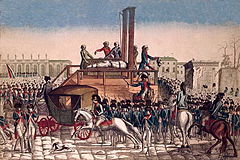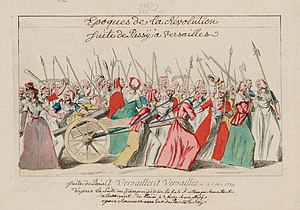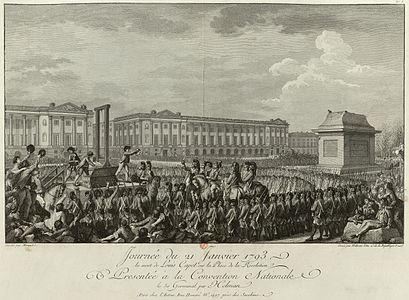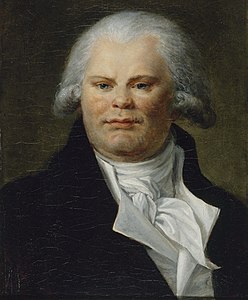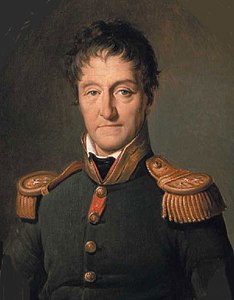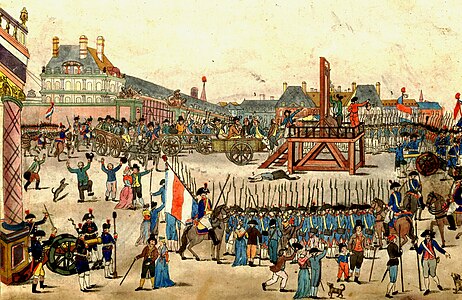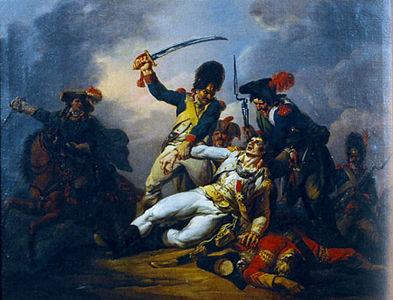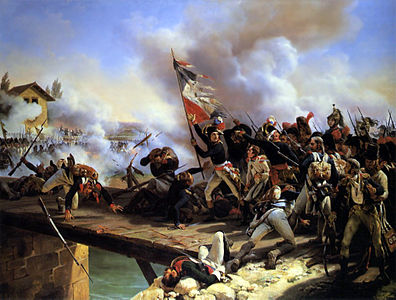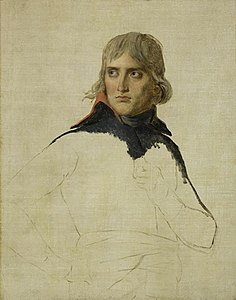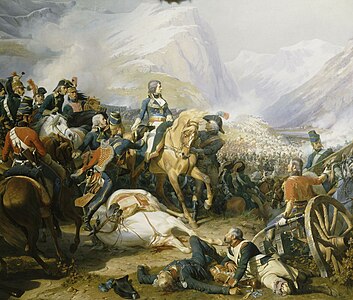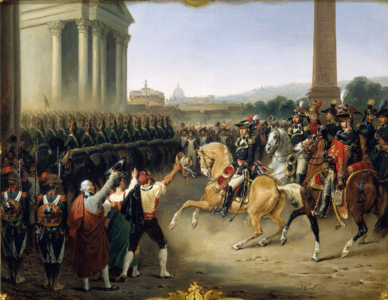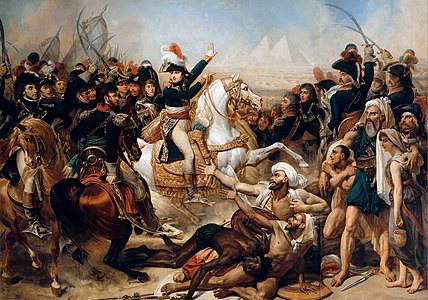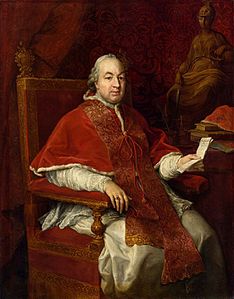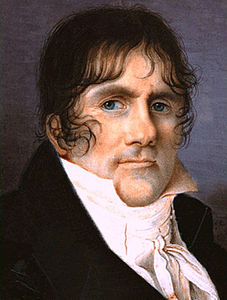
The French Revolution was a period of political and societal change in France that began with the Estates General of 1789, and ended with the coup of 18 Brumaire in November 1799 and the formation of the French Consulate. Many of its ideas are considered fundamental principles of liberal democracy, while its values and institutions remain central to modern French political discourse.

The Directory was the governing five-member committee in the French First Republic from 26 October 1795 until 10 November 1799, when it was overthrown by Napoleon Bonaparte in the Coup of 18 Brumaire and replaced by the Consulate. Directoire is the name of the final four years of the French Revolution. Mainstream historiography also uses the term in reference to the period from the dissolution of the National Convention on 26 October 1795 to Napoleon's coup d’état.

Jean-François Reubell or Rewbell was a French lawyer, diplomat, and politician of the Revolution.

Charles-François du Périer Dumouriez was a French military officer, minister of Foreign Affairs, minister of War in a Girondin cabinet and army general during the French Revolutionary War. Dumouriez is one of the names inscribed under the Arc de Triomphe, on Column 3.

The Society of the Friends of the Constitution, renamed the Society of the Jacobins, Friends of Freedom and Equality after 1792 and commonly known as the Jacobin Club or simply the Jacobins, was the most influential political club during the French Revolution of 1789. The period of its political ascendancy includes the Reign of Terror, during which well over 10,000 people were put on trial and executed in France, many for political crimes.

The Girondins, or Girondists, were a political group during the French Revolution. From 1791 to 1793, the Girondins were active in the Legislative Assembly and the National Convention. Together with the Montagnards, they initially were part of the Jacobin movement. They campaigned for the end of the monarchy, but then resisted the spiraling momentum of the Revolution, which caused a conflict with the more radical Montagnards. They dominated the movement until their fall in the insurrection of 31 May – 2 June 1793, which resulted in the domination of the Montagnards and the purge and eventual mass execution of the Girondins. This event is considered to mark the beginning of the Reign of Terror.

The National Convention was the constituent assembly of the Kingdom of France for one day and the French First Republic for its first three years during the French Revolution, following the two-year National Constituent Assembly and the one-year Legislative Assembly. Created after the great insurrection of 10 August 1792, it was the first French government organized as a republic, abandoning the monarchy altogether. The Convention sat as a single-chamber assembly from 20 September 1792 to 26 October 1795.

In the historiography of the French Revolution, the Thermidorian Reaction is the common term for the period between the ousting of Maximilien Robespierre on 9 Thermidor II, or 27 July 1794, and the inauguration of the French Directory on 2 November 1795.

Joseph Fouché, 1st Duc d'Otrante, 1st Comte Fouché was a French statesman, revolutionary, and Minister of Police under First Consul Napoleon Bonaparte, who later became a subordinate of Emperor Napoleon. He was particularly known for the ferocity with which he suppressed the Lyon insurrection during the Revolution in 1793 and for being minister of police under the Directory, the Consulate, and the Empire. In 1815, he served as President of the Executive Commission, which was the provisional government of France installed after the abdication of Napoleon. In English texts, his title is often translated as Duke of Otranto.
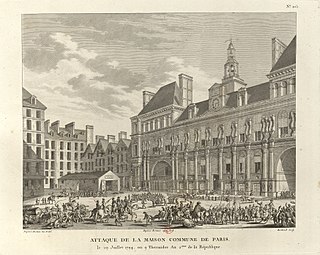
The Paris Commune during the French Revolution was the government of Paris from 1789 until 1795. Established in the Hôtel de Ville just after the storming of the Bastille, it consisted of 144 delegates elected by the 60 divisions of the city. Before its formal establishment, there had been much popular discontent on the streets of Paris over who represented the true Commune, and who had the right to rule the Parisian people. The first mayor was Jean Sylvain Bailly, a relatively moderate Feuillant who supported constitutional monarchy. He was succeeded in November 1791 by Pétion de Villeneuve after Bailly's unpopular use of the National Guard to disperse a riotous assembly in the Champ de Mars.
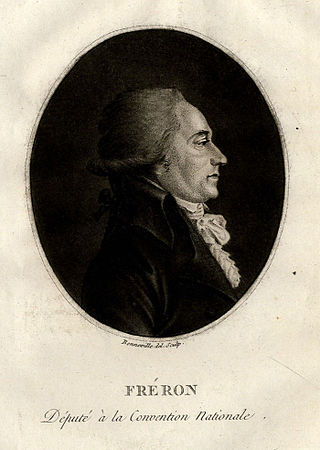
Louis-Marie Stanislas Fréron was a French politician, journalist, representative to the National Assembly, and a representative on mission during the French Revolution.

The Revolutionary Tribunal was a court instituted by the National Convention during the French Revolution for the trial of political offenders. In October 1793, it became one of the most powerful engines of the Reign of Terror.

Louis Legendre was a French politician of the Revolution period.

Edmond-Louis-Alexis Dubois de Crancé, dit Dubois-Crancé, was a French musketeer, general, and revolutionary politician who served for a few months as minister of war.

La Révolution française is a two-part 1989 historical drama co-produced by France, Germany, Italy and Canada for the 200th anniversary of the French Revolution. The full film runs at 360 minutes, but the edited-for-television version is slightly longer. It purports to tell a faithful and neutral story of the Revolution, from the calling of the Estates-General to the death of Maximilien de Robespierre. The film had a large budget and boasted an international cast. It was shot in French, German and English.

The Society of the Friends of the Constitution, better known as Feuillants Club, was a political grouping that emerged during the French Revolution. It came into existence on 16 July 1791. The assembly split between the Feuillants on the right, who sought to preserve the position of the king and supported the proposed plan of the National Constituent Assembly for a constitutional monarchy; and the radical Jacobins on the left, who wished to press for a continuation of the overthrow of Louis XVI. It represented the last and most vigorous attempt of the moderate constitutional monarchists to steer the course of the revolution away from the radical Jacobins.

The White Terror was a period during the French Revolution in 1795 when a wave of violent attacks swept across much of France. The victims of this violence were people identified as being associated with the Reign of Terror – followers of Robespierre and Marat, and members of local Jacobin clubs. The violence was perpetrated primarily by those whose relatives or associates had been victims of the Great Terror, or whose lives and livelihoods had been threatened by the government and its supporters before the Thermidorean Reaction. Principally, these were, in Paris, the Muscadins, and in the countryside, monarchists, supporters of the Girondins, those who opposed the Civil Constitution of the Clergy and those otherwise hostile to the Jacobin political agenda.

Maximilien François Marie Isidore de Robespierre was a French lawyer and statesman, widely recognized as one of the most influential and controversial figures of the French Revolution. His vision was centered on forging a unified and indivisible France, establishing equality under the law and eradicating privileges.
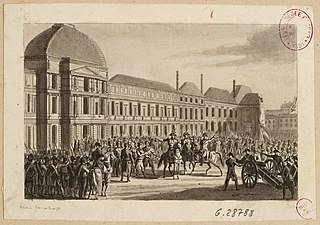
The insurrection of 31 May – 2 June 1793, during the French Revolution, started after the Paris commune demanded that 22 Girondin deputies and members of the Commission of Twelve should be brought before the Revolutionary Tribunal. Jean-Paul Marat led the attack on the representatives in the National Convention, who in January had voted against the execution of the King and since then had paralyzed the convention. It ended after thousands of armed citizens surrounded the convention to force it to deliver the deputies denounced by the Commune.The insurrection resulted in the fall of 29 Girondins and two ministers under pressure of the sans-culottes, Jacobins, and Montagnards.
